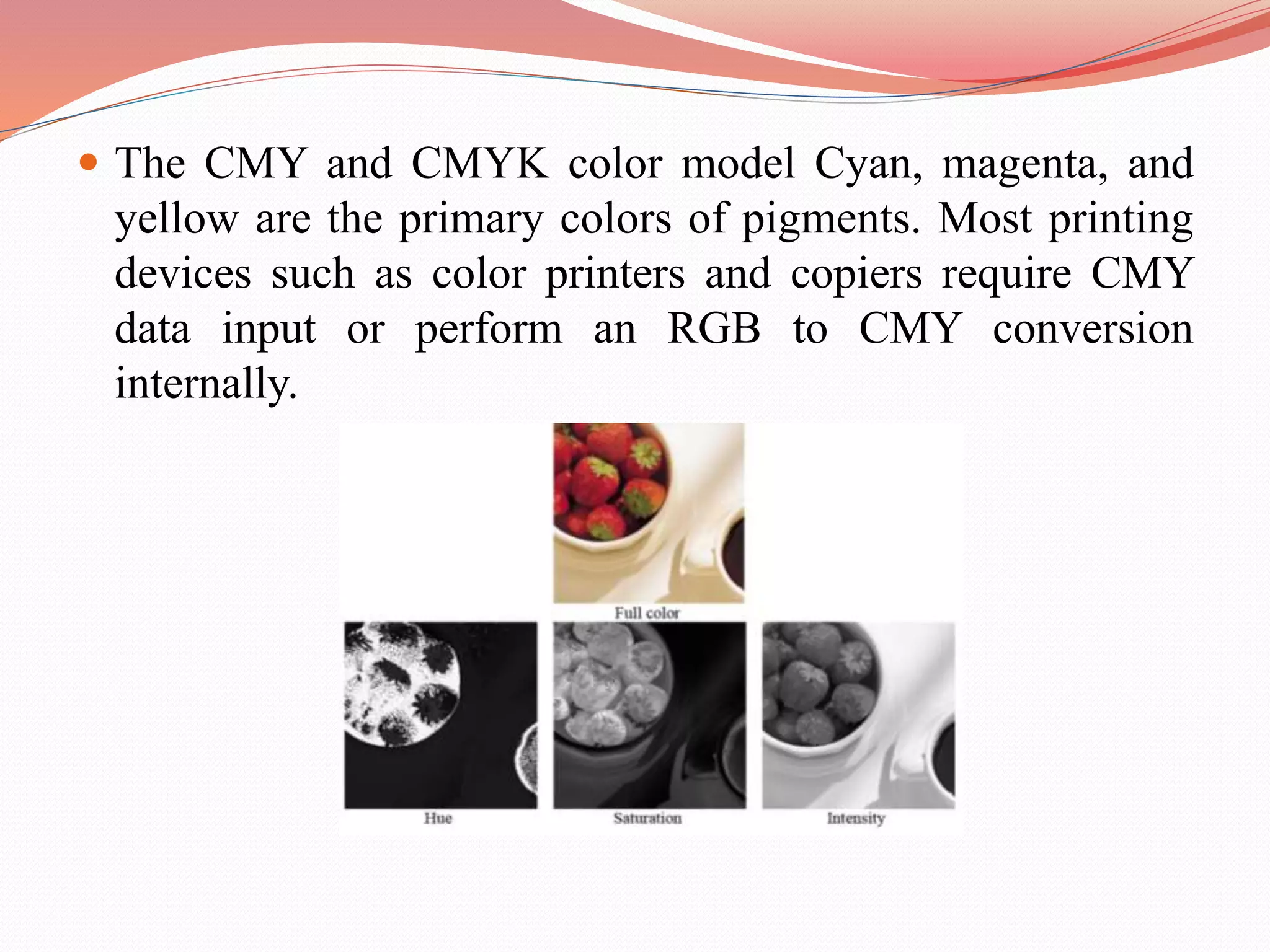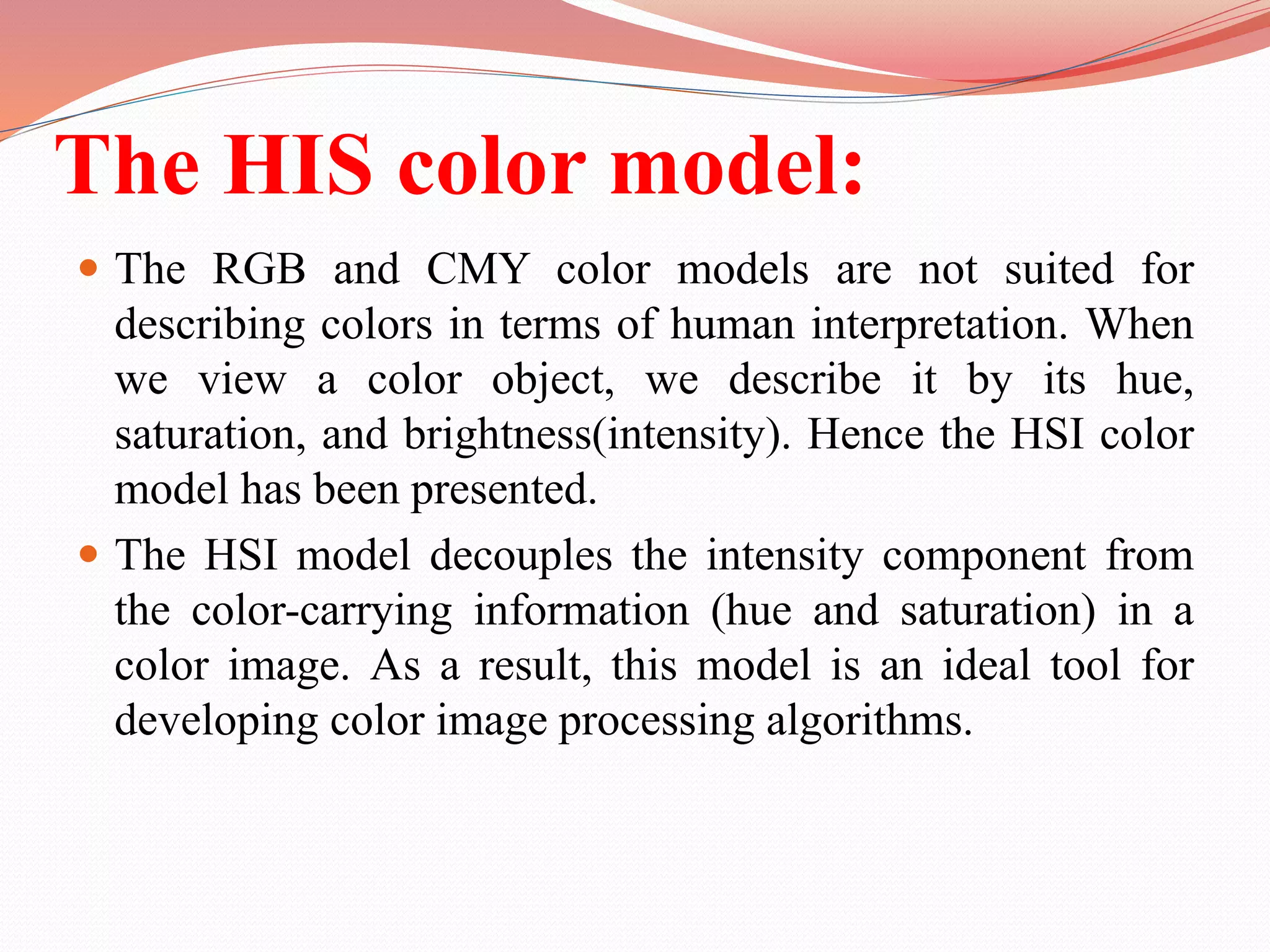1. There are different relationships between pixels including neighborhood, adjacency, connectivity, and paths.
2. Neighborhood refers to the pixels surrounding a given pixel. Adjacency means two pixels are connected based on a similarity criterion.
3. Connectivity determines if pixels are adjacent in a certain sense like 4-connected or 8-connected based on their neighborhoods.
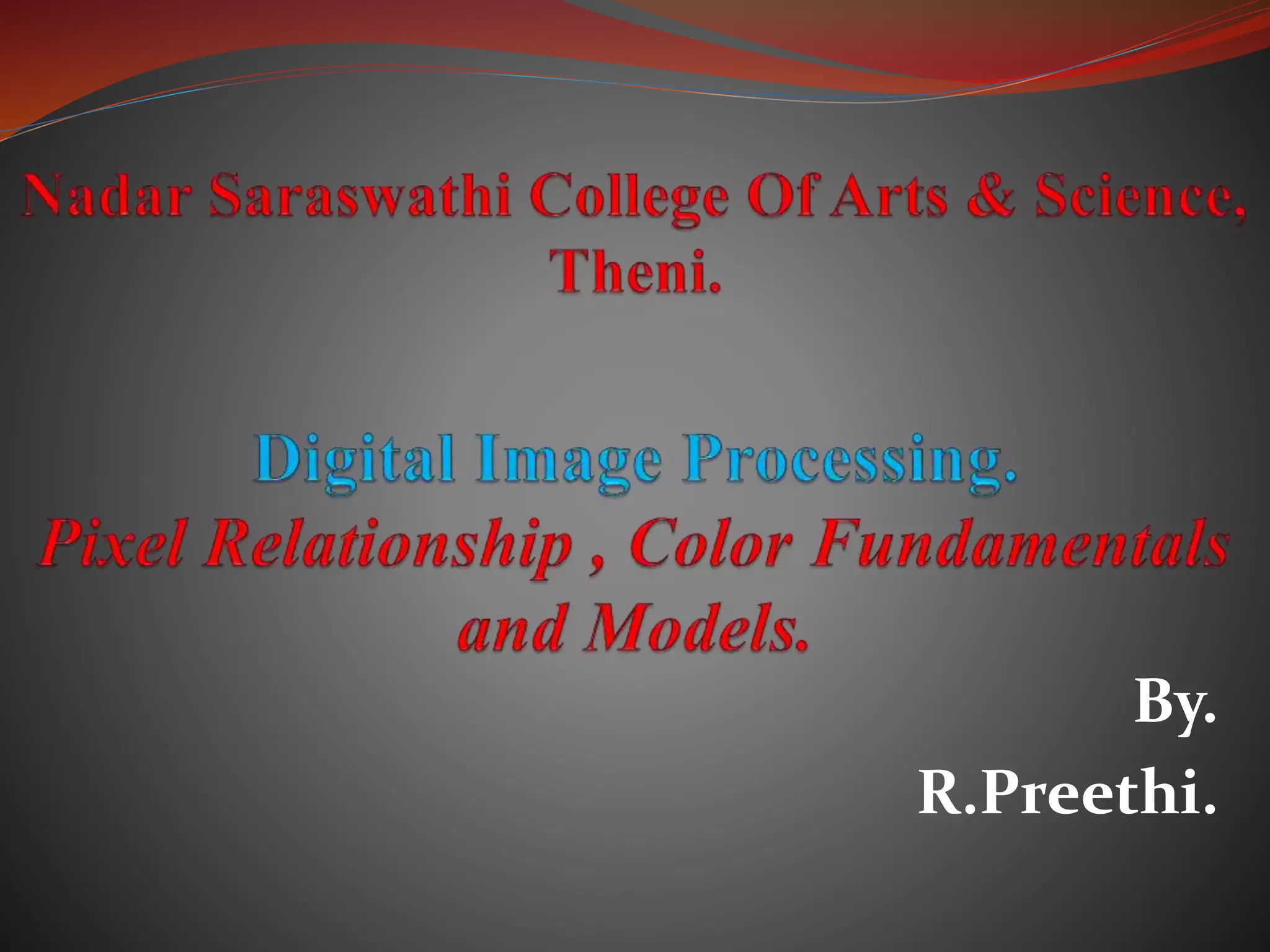


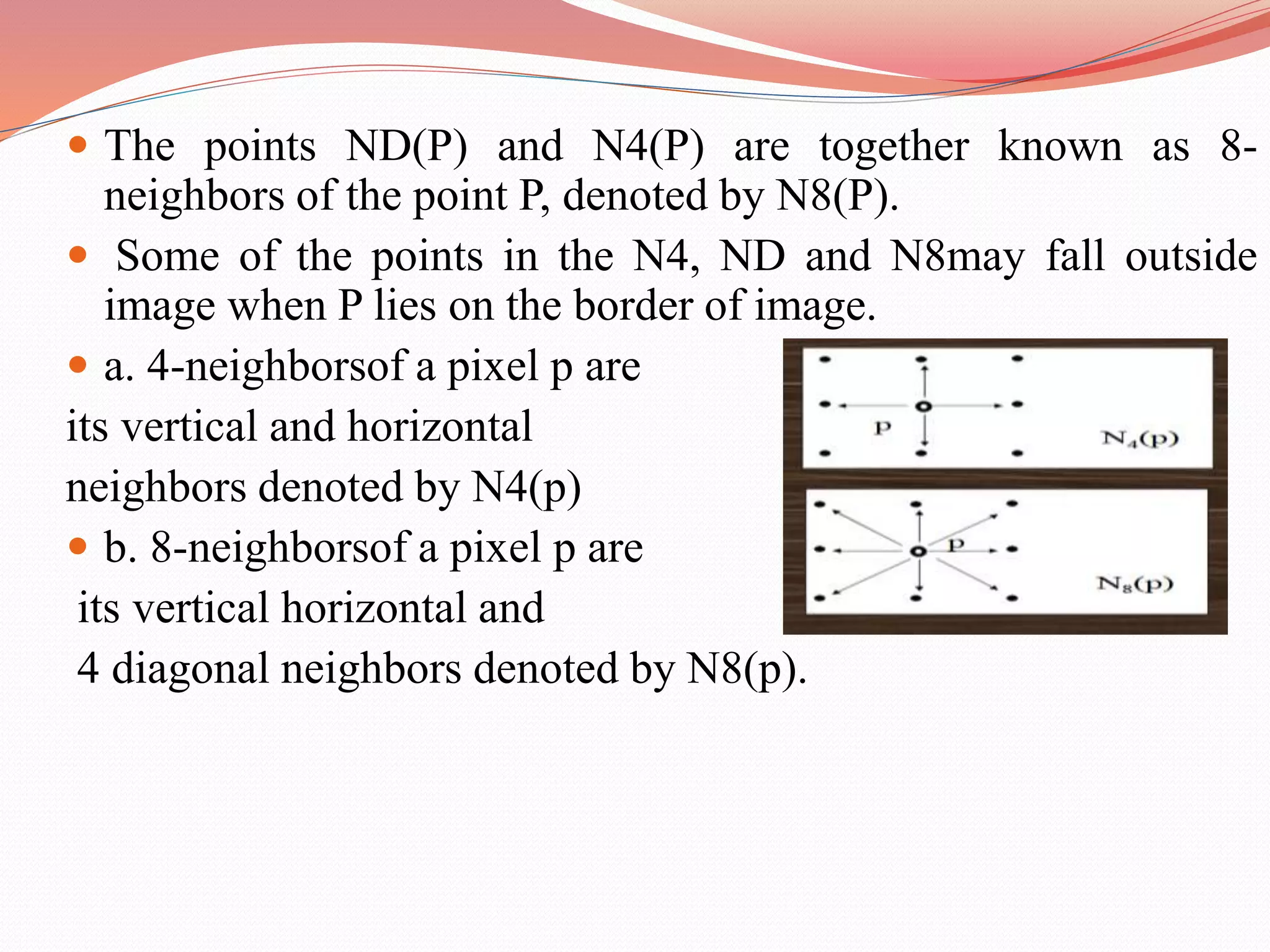

![ m-adjacency: Two pixels pand qwith values from V are m-
adjacent if,
–q is in N4(P).
–q is in ND(p) and the set [ ] is empty (has no pixels
whose values are from V).
Connectivity :
• To determine whether the pixels are adjacent in some
sense.
• Let V be the set of gray-level values used to define
connectivity; then Two pixels p, q that have values from
the set V are:](https://image.slidesharecdn.com/dip-200107131922/75/Digital-Image-Processing-6-2048.jpg)


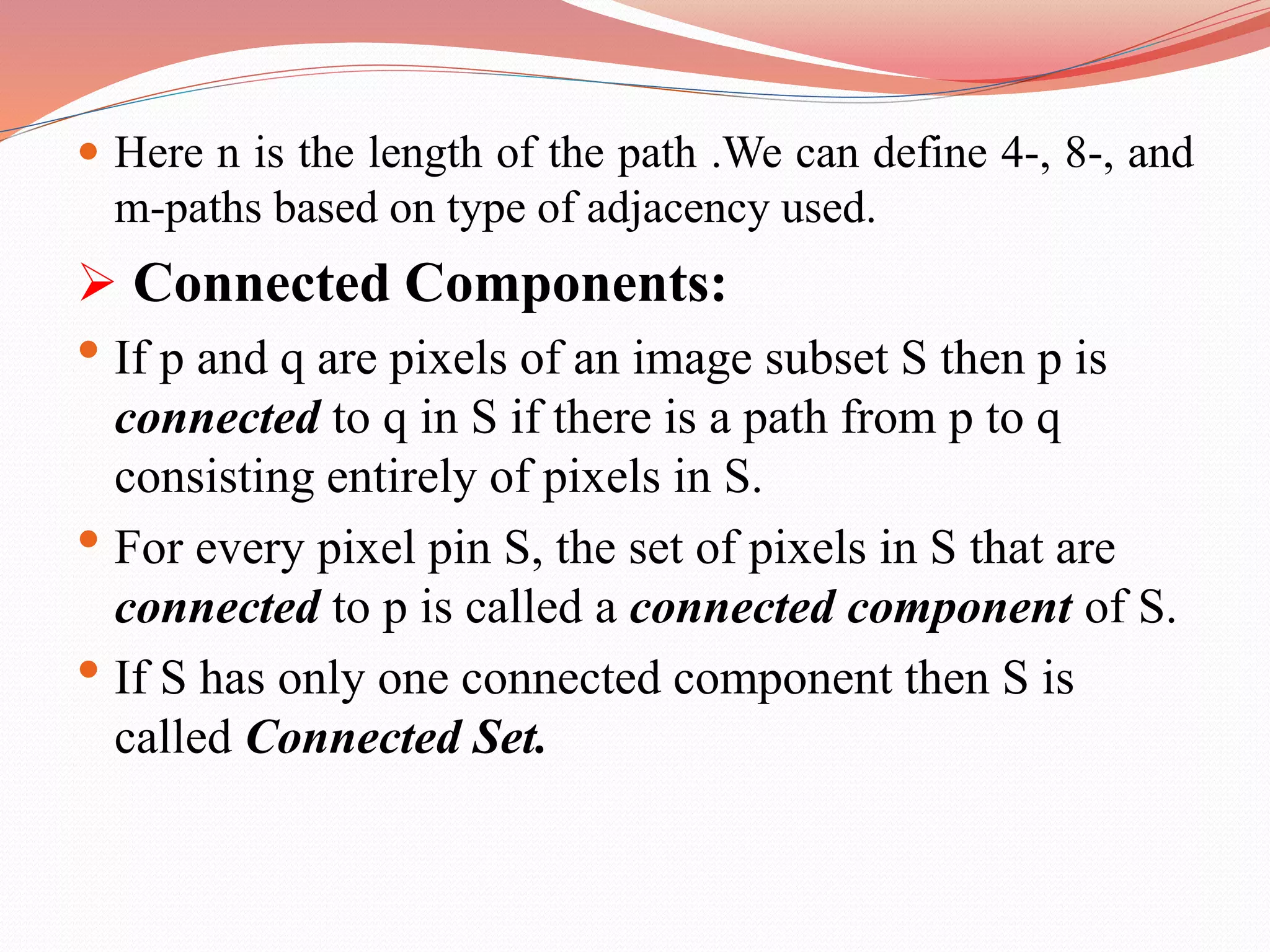

![a.D(p, q) 0 [D(p, q) = 0, iff p = q]
b. D(p, q) = D(q, p)
c. D(p, z) D(p, q) + D(q, z)
The following are the different Distance measures:
a.Euclidean Distance : De(p, q) = [(x-s)2 + (y-t)2]
b. City Block Distance: ÆD4(p, q) = |x-s| + |y-t|
c. Chess Board Distance: ÆD8(p, q) = max(|x-s|, |y-t|)](https://image.slidesharecdn.com/dip-200107131922/75/Digital-Image-Processing-11-2048.jpg)
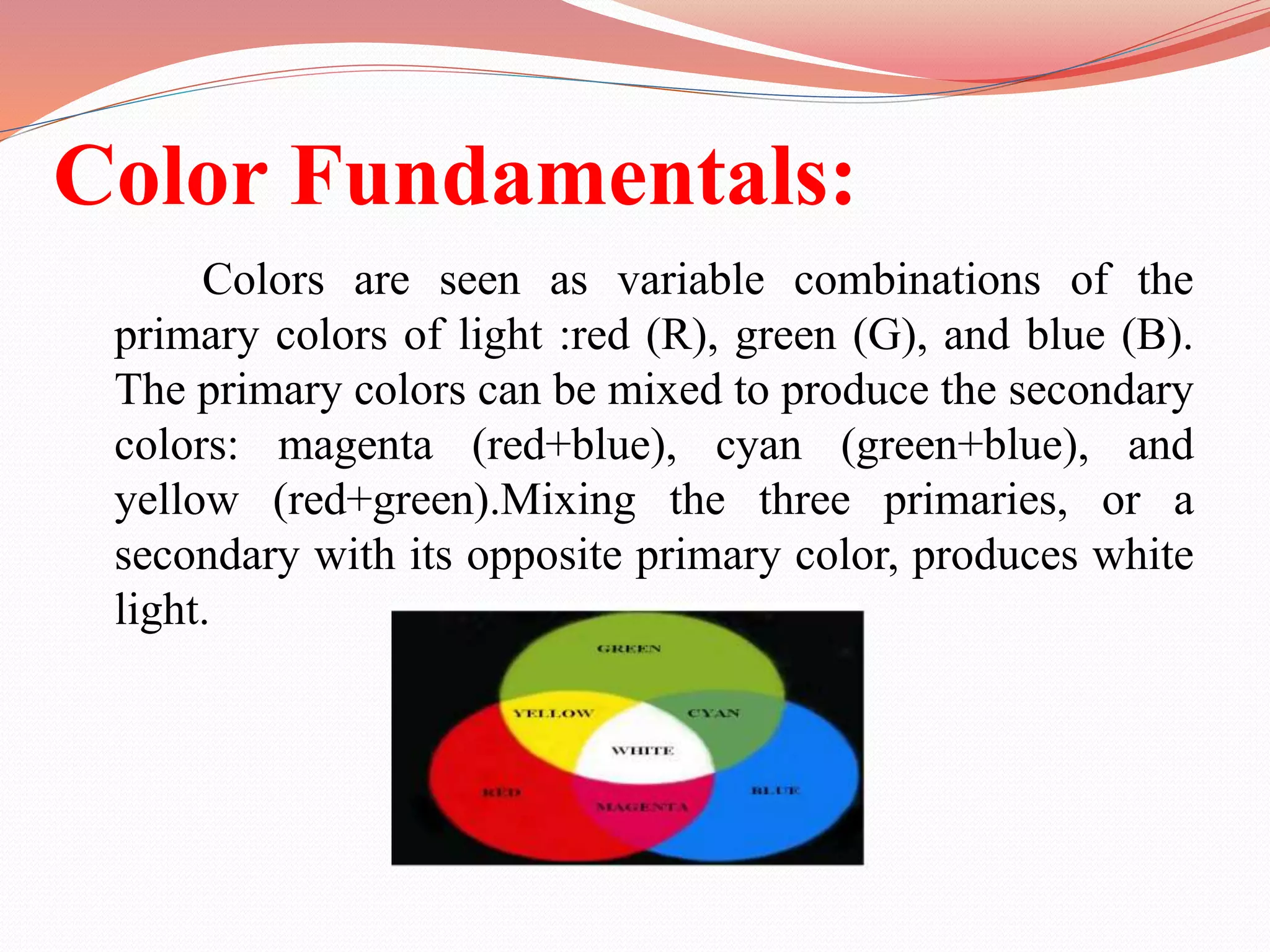
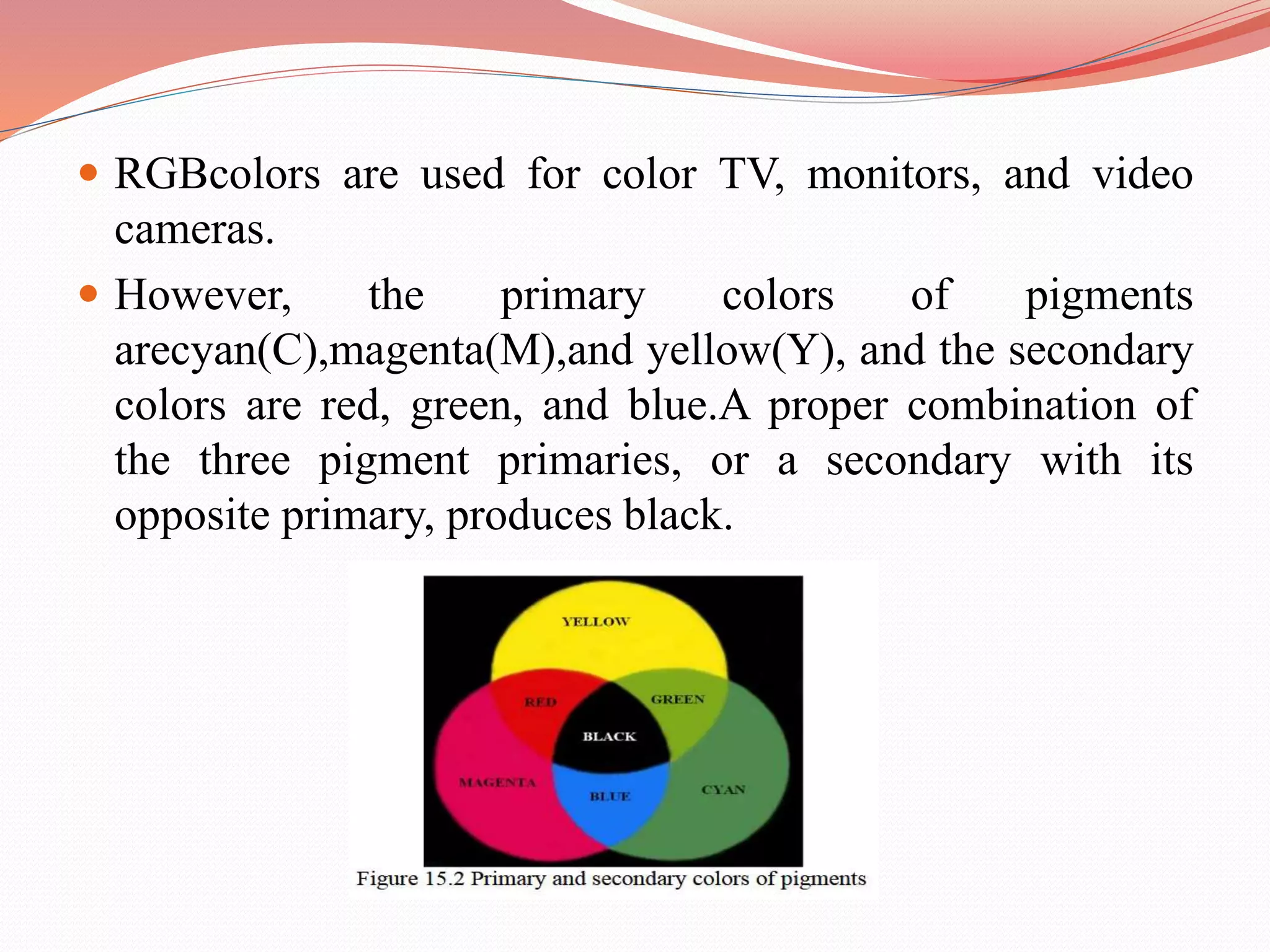
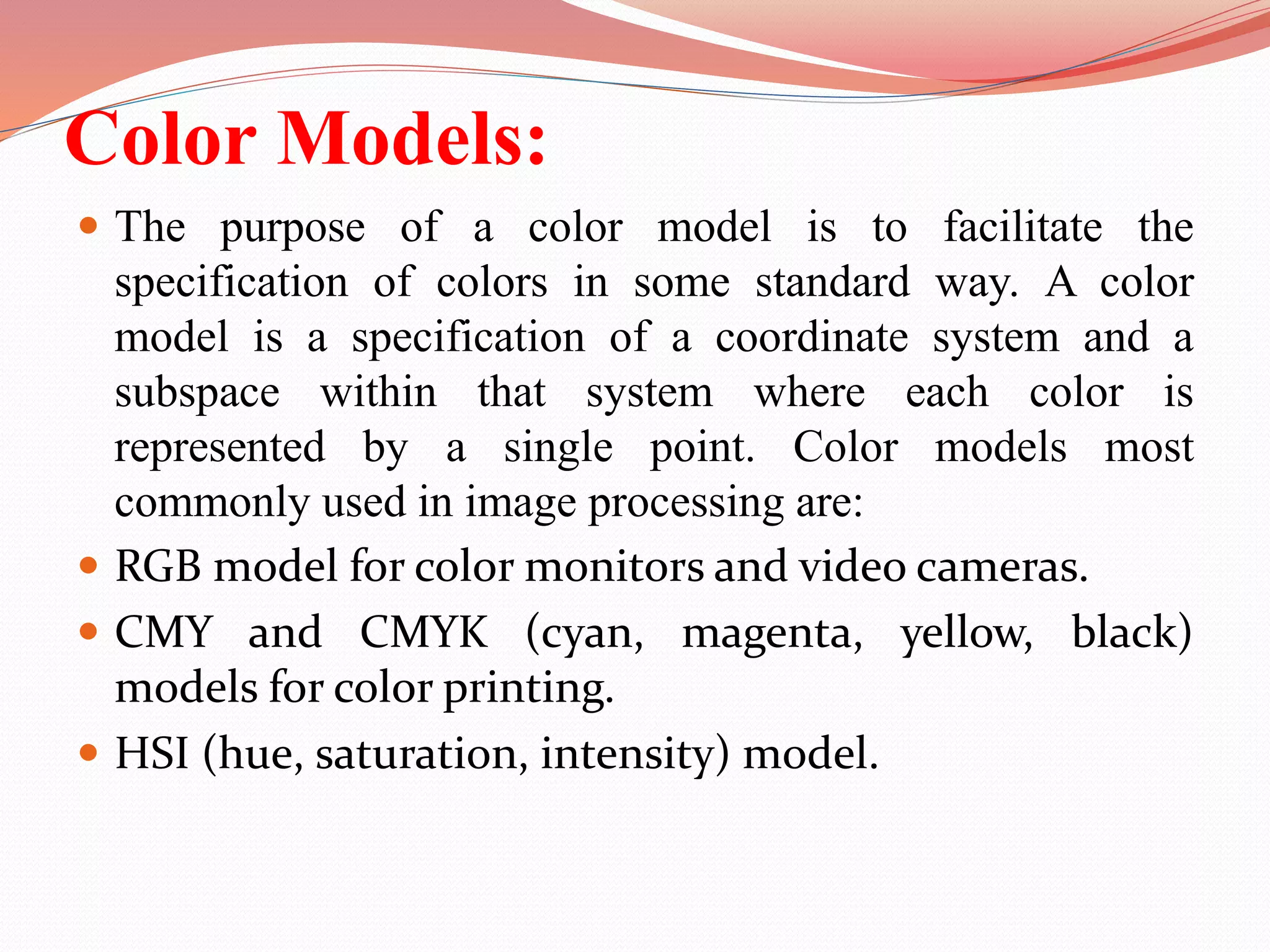
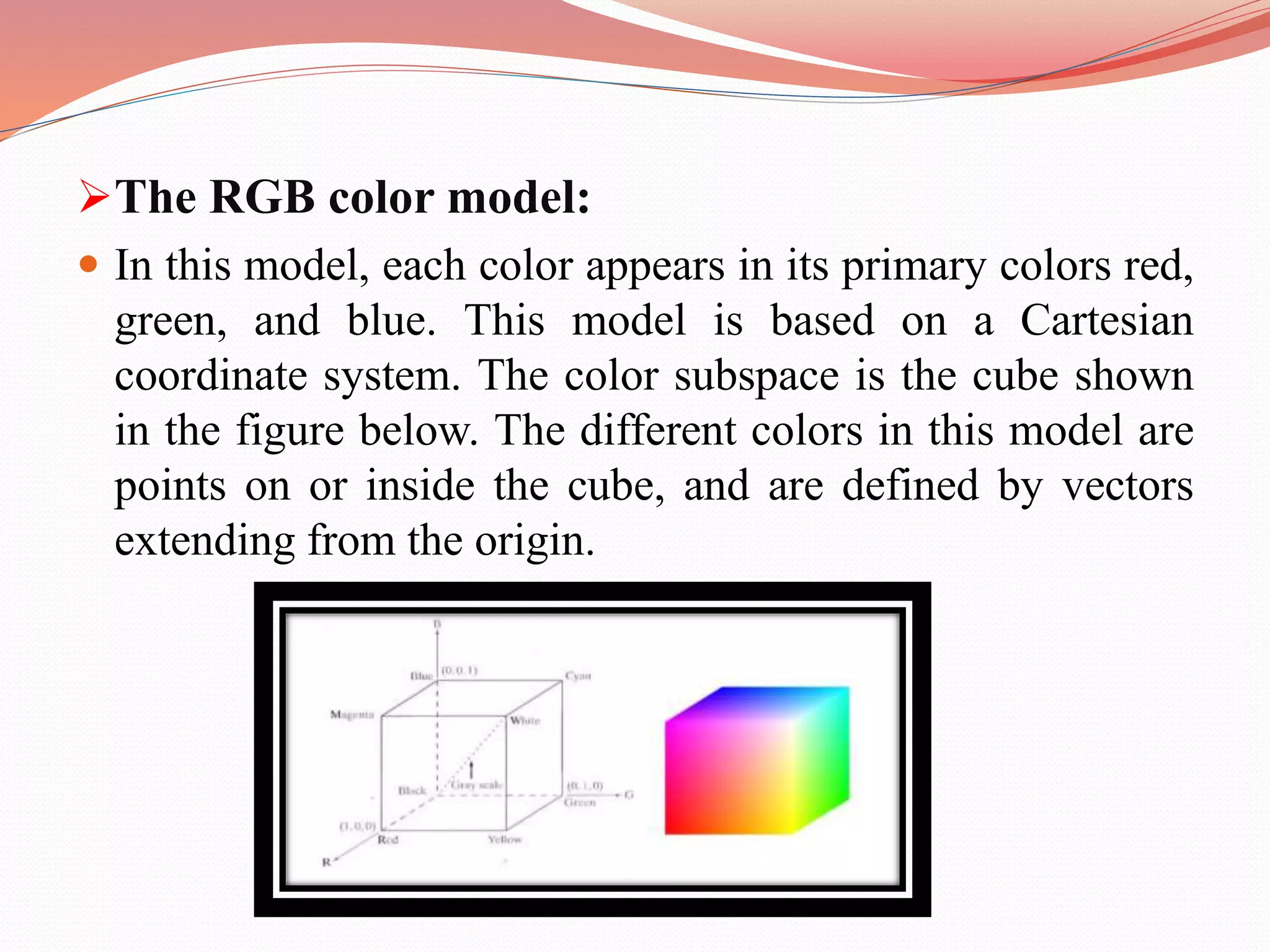
![ All color values R, G, and B have been normalized in the
range [0, 1].However, we can represent each of R, G, and
B from 0 to 255. Each RGB color image consists of three
component images, one for each primary color as shown
in the figure below. These three images are combined on
the screen to produce a color image.](https://image.slidesharecdn.com/dip-200107131922/75/Digital-Image-Processing-16-2048.jpg)
